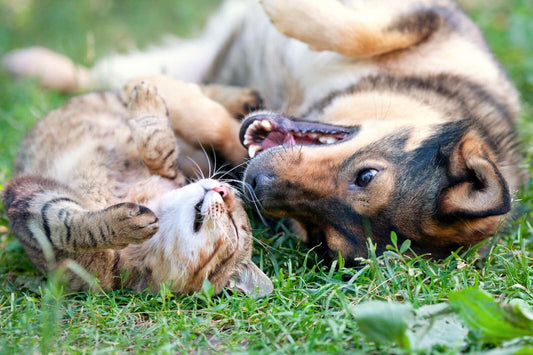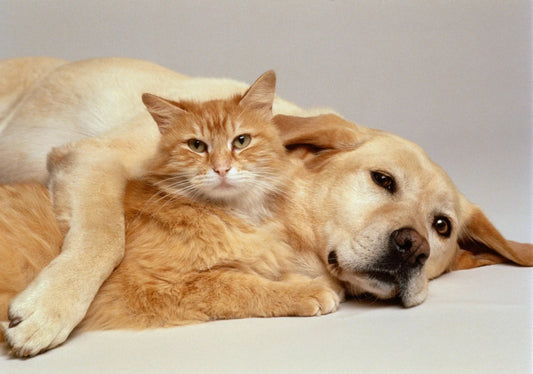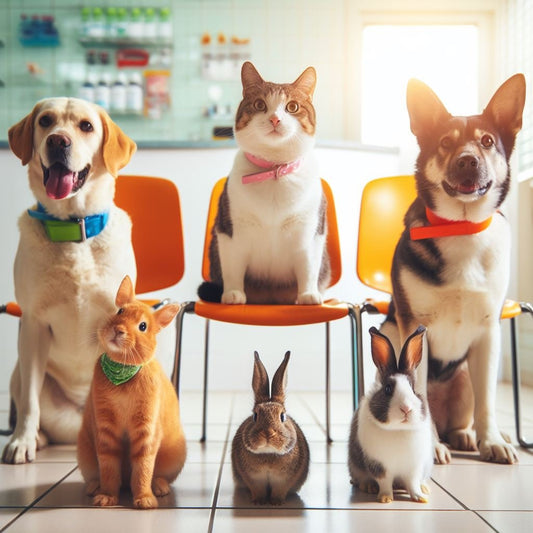It's super important to understand when our furry feline friends aren't feeling their best. Cats can't tell us in words if they're unhappy, so it's up to us to pick up on their cues. Just like us, they can feel stressed, anxious, or upset for various reasons. By recognizing these signs early on, we can help them feel better and improve their quality of life. Let's find out what these signs might mean and what you can do to help your furry friend feel happier and more comfortable.
Changes in Behaviour
Decreased appetite or changes in eating habits:
If your usually chow-hound kitty suddenly turns up their nose at their favourite food or starts eating significantly less, it could be a sign that something's amiss. Cats can lose their appetite due to various reasons, including stress, illness, or dental problems. Keep an eye on their eating habits and consult with your vet if you notice any significant changes.
Increased hiding or avoidance of interaction:
Cats are known for their independent nature, but if your kitty suddenly becomes more reclusive than usual, it could be a cause for concern. Hiding away in unusual places or avoiding interaction with family members could indicate that your cat is feeling stressed, anxious, or unwell. Create safe and comfortable spaces for your cat to retreat to and provide plenty of opportunities for positive interactions to help them feel more secure.

Aggression towards people or other pets:
While occasional hissing or swatting is normal cat behaviour, excessive aggression towards people or other pets could be a sign of underlying issues. If your sweet kitty suddenly starts lashing out or behaving aggressively, it's essential to address the root cause. Possible reasons for aggression include fear, pain, territorial disputes, or changes in the household dynamic. Consult with your vet or a feline behaviourist to identify the cause of the aggression and develop a plan to address it effectively.
Vocalization Patterns
Excessive meowing or yowling:
Cats communicate through various vocalizations, but if your furry friend starts meowing or yowling more than usual, it could be a sign that something's bothering them. Excessive vocalization can indicate stress, discomfort, or a desire for attention. Pay attention to the context of your cat's meows and try to identify any underlying triggers. Providing extra comfort, engaging in interactive play sessions, or addressing any potential stressors in their environment can help reduce excessive meowing.
Purring less frequently or atypical purring:
Purring is often associated with contentment and relaxation in cats, but changes in purring patterns can signal distress or discomfort. If your cat purrs less frequently than usual or purrs in an unusual manner, it may indicate that they're not feeling their best. Keep an eye on your cat's body language and behaviour to determine if there are any underlying issues contributing to the change in purring behaviour. Providing a comfortable and stress-free environment, along with regular vet check-ups, can help ensure your cat's well-being.
Litter Box Issues
Avoiding the litter box or inappropriate urination:
If your cat suddenly starts avoiding the litter box or urinating outside of it, it could be a sign of unhappiness or discomfort. Cats are typically clean animals and prefer to use their litter box consistently. If they begin urinating in inappropriate places, it may indicate a medical issue, such as a urinary tract infection or bladder stones, or behavioural issues like stress or anxiety. It's essential to address this behaviour promptly by consulting with your veterinarian to rule out any underlying health problems and to identify and address potential stressors in your cat's environment.
Changes in litter box habits or consistency of waste:
Pay attention to any changes in your cat's litter box habits or the consistency of their waste. A sudden change in litter box behaviour, such as using the litter box more frequently or less frequently than usual, or producing unusually large or small stools, could indicate an underlying health issue. Changes in the colour, odour, or texture of your cat's waste may also signal digestive problems or other health concerns. Regularly monitoring your cat's litter box habits and waste can help you detect potential issues early and seek appropriate veterinary care.
Physical Signs
Changes in grooming habits or excessive grooming:
Keep an eye on your cat's grooming habits as they can provide valuable clues about their emotional state. If you notice your cat grooming more often than usual or neglecting their grooming altogether, it could indicate that they're feeling stressed or unhappy. Excessive grooming can lead to skin irritation or hair loss, so it's essential to address the underlying cause promptly. Consider factors like changes in the household routine, introduction of new pets, or recent environmental changes that may be contributing to your cat's stress.
Lethargy or decreased activity levels:
Cats are typically curious and active creatures, so a sudden decrease in their activity levels or overall energy could be a sign that something isn't right. Lethargy or reluctance to engage in play or exploration may indicate that your cat is feeling unwell or unhappy. Monitor your cat's behaviour closely and consult with your veterinarian if you notice any significant changes in their activity levels. Your vet can perform a thorough examination to rule out any underlying health issues and provide guidance on how to improve your cat's well-being.
Signs of stress-related conditions such as over-grooming or hair loss:
Stress can manifest in various ways in cats, including over-grooming or excessive shedding. If you notice bald patches, thinning fur, or signs of self-inflicted injuries on your cat's skin, it could be a result of stress-related behaviours. Cats may resort to excessive grooming as a coping mechanism for dealing with anxiety or other emotional stressors. Creating a calm and stable environment for your cat, providing plenty of mental and physical stimulation, and addressing any underlying stressors can help alleviate these symptoms and improve your cat's overall happiness and well-being.
Environmental Indicators
Destructive behaviour towards furniture or belongings:
Keep an eye out for any signs of destructive behaviour in your cat, such as scratching furniture, chewing on household items, or knocking over objects. These behaviours can be a way for cats to release pent-up energy or frustration, especially if they're feeling stressed or unhappy. Providing appropriate outlets for your cat's natural behaviours, such as scratching posts or interactive toys, can help redirect their energy and prevent damage to your home. Addressing any underlying stressors or environmental changes can help alleviate these destructive behaviours and improve your cat's overall well-being.
Changes in sleeping patterns or unusual hiding spots:
Cats are creatures of habit, so any significant changes in their sleeping patterns or preferred hiding spots may indicate that something is amiss. If your cat starts sleeping more than usual, becomes restless at night, or seeks out unusual hiding spots, it could be a sign of stress or discomfort. Pay attention to your cat's behaviour and try to identify any potential triggers or changes in their environment that may be causing distress. Providing a quiet and comfortable space for your cat to rest, along with plenty of enrichment activities and mental stimulation, can help alleviate their stress and promote better sleep habits.
Seeking Veterinary Advice
It's important to consult a veterinarian if you notice persistent signs of unhappiness in your cat. Your vet can help determine if there's an underlying health issue contributing to your cat's behaviour and provide guidance on the best course of action. Whether it's a physical ailment causing discomfort or a behavioural concern that needs addressing, your vet can offer expert advice and treatment options to help improve your cat's well-being.













